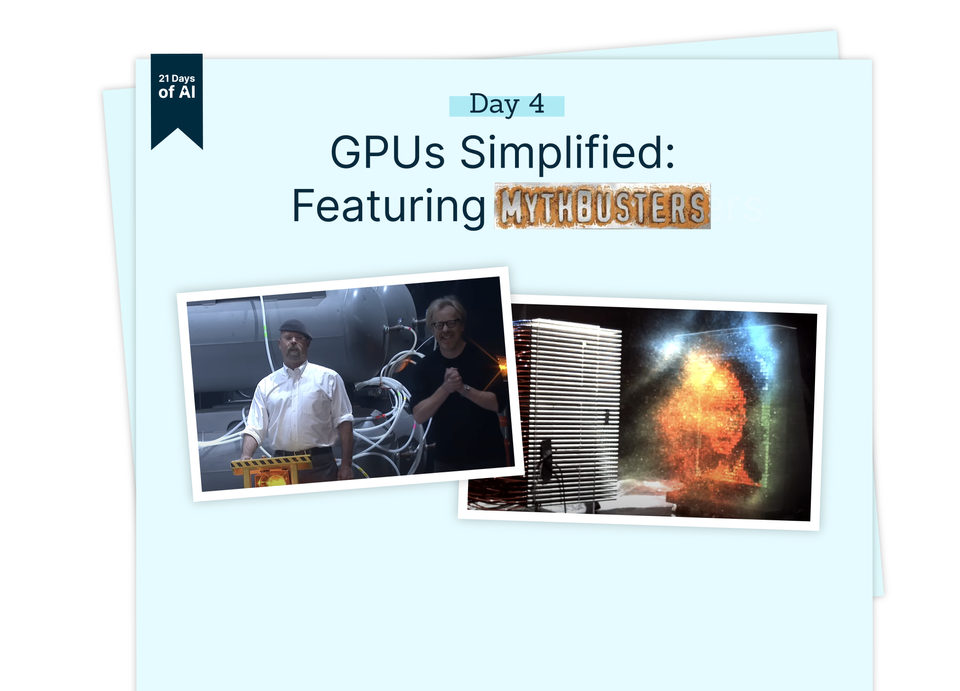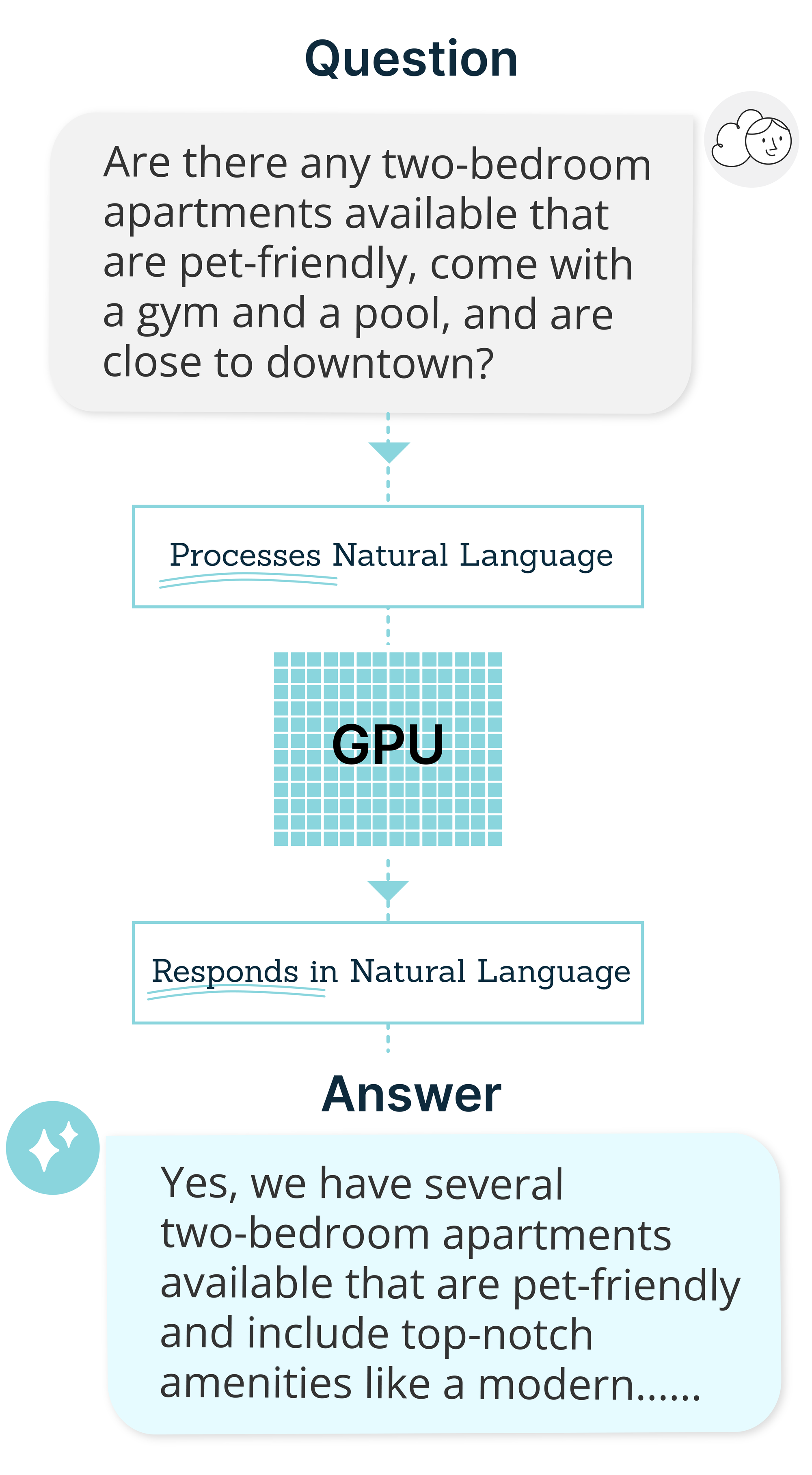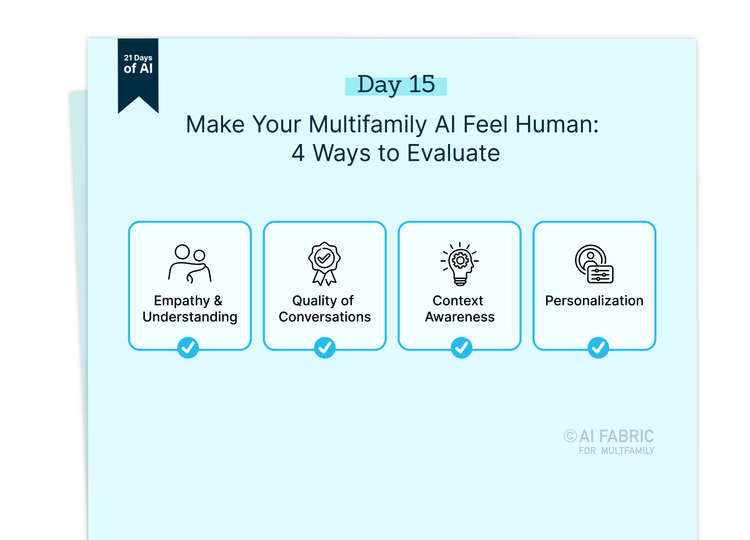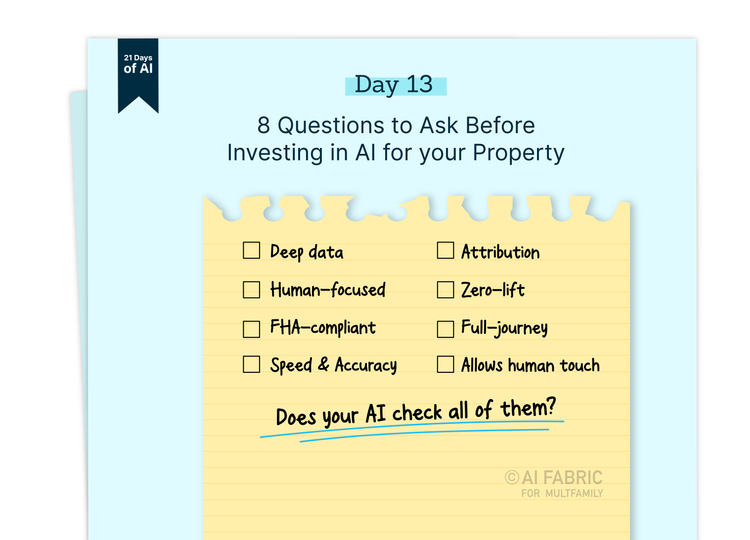GPUs Simplified: Featuring Mythbusters

Hello and welcome to Day 4 of "21 Days of AI"!
Today's star? Graphics Processing Unit (GPU)! If you have wondered how AI handles so much data so quickly? It’s all thanks to GPUs.
Today’s highlights:
- Evolution of GPUs from gaming to driving AI.
- Difference between CPU and GPU
- GPUs and Multifamily AI chatbots.
Join us with your morning coffee as we dive into how GPUs are making AI smarter every day!
Originally, GPUs were designed to enhance computer graphics, handling many small graphical tasks at once to improve the aesthetics of video games and computer efficiency.
However, as the field of AI expanded, GPUs discovered a new role.
AI, particularly machine learning, requires simulating numerous neurons to train a "virtual brain." GPUs are ideally suited for this task because they can process many data points in parallel, mimicking the collective effort of neurons in the brain.
So, Why Not a CPU?
You might wonder why not just use a CPU, the traditional brain of a computer.
Well, CPUs use serial processing to tackle one task at a time, which can slow things down when dealing with complex data.
GPUs, on the other hand, utilize parallel processing, which allows them to manage multiple tasks simultaneously. This capability makes GPUs better suited for AI tasks that require rapid analysis and processing of vast datasets, ensuring quicker, more efficient, and responsive AI interactions.
A Quick Look at GPUs in Action
To grasp the true potential of GPUs, imagine a spectacular demonstration where two machines—a CPU and a GPU—compete to paint the Mona Lisa.
The CPU paints one stroke at a time, slowly building up the image.
In stark contrast, the GPU operates like a grand orchestra of paintball shooters, firing all colors simultaneously and completing the iconic painting in a blink of an eye.
This vivid demonstration by Mythbusters’ Adam Savage and Jamie Hyneman highlights the core strength of GPUs: their ability to handle not just multiple tasks but to process a vast array of data points all at once, efficiently completing complex tasks.
While CPUs process tasks sequentially, GPUs tackle challenges with parallel processing, much like our brain's neurons firing together to quickly solve problems.
GPUs excel in AI because they can process multiple data points concurrently, similar to having thousands of paintballs flying in perfect harmony to create a complex image in seconds. This ability to process multiple data points concurrently not only speeds up calculations but also allows AI systems to handle intricate tasks more efficiently, making GPUs an essential tool in pushing the boundaries of what machines can learn and achieve.
GPUs at Work in Multifamily Chatbots
Consider a scenario where you use an AI-powered chatbot to manage inquiries about your properties. This chatbot does more than just look up information; it talks and understands like a human. This is where GPUs become important.

GPUs are essential because they process the complex language tasks that make these natural interactions possible. These tasks include understanding the nuances of human language and crafting responses that are coherent and contextually appropriate.
While traditional CPUs can manage routine data tasks, the intricate requirements of natural language processing demand the more robust capabilities of GPUs.
And that's the simple scoop on GPUs: they've grown from creating graphics to becoming key players in AI, helping computers think and learn a lot like we do.
That wraps up our Day 4 of "21 Days of AI!"
In the next edition, we’ll unveil more secrets behind AI's capabilities. Thanks for reading, and see you in the next newsletter!
Feel free to let us know what AI topics you're curious about or want to understand better!
Resources: Mythbusters Demo GPU versus CPU






Member discussion